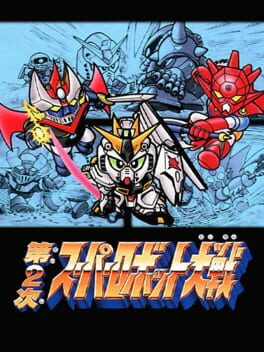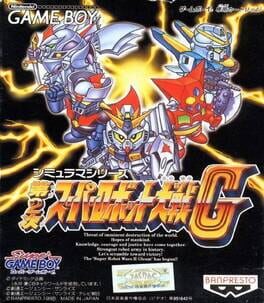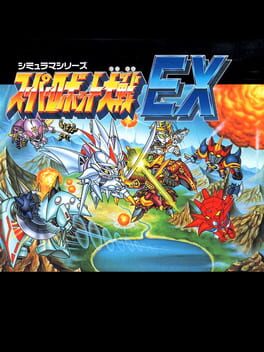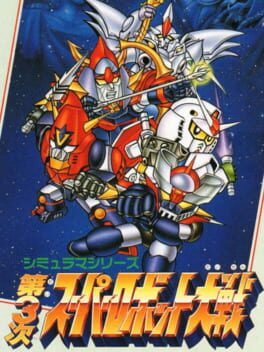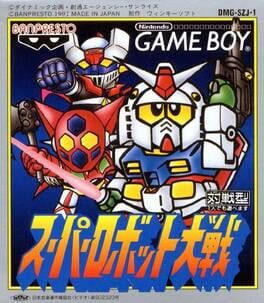

Dai-2-ji Super Robot Taisen was the first Super Robot Wars on a console, and the first entry to contain the traditional SRW gameplay that exists to this day.
Also in series
Reviews View More
I was in a bit of a rut on which SRW game to play next, and bounced off of the couple that I tried. It was then that I remembered that I have the Complete Box Collection, remakes of SRW 2, 3, and EX using the engine from F and F Final. It was released on the PS1 in 1999, and I see it as a sort of last hurrah for Winky Soft before they ceased making SRW games. Something more simple and like the first SRW game I played way back in March turned out to be just what the doctor ordered. These still don’t count playtime, so I reckon it probably took me around 30 or 40 hours to beat the Japanese version of the game on original hardware.
SRW2, despite that “2” in the name, is actually the first SRW game in many respects. Way back in its original incarnation on the Famicom in 1991, it was the very first SRW game that Winky Soft made, and also the first one to have a story of any kind (with the first SRW on GameBoy, the one actually made by Banpresto, being more of a collection of maps not unlike the early Advance Wars games). This is the first in what’s known retroactively as the Divine Crusaders saga, where our heroes fight primarily against the group of bad guys (themselves primarily from U.C. Gundam, Getter Robo, and Mazinger Z) known as the Divine Crusaders. A great scientist foresaw the attack of Earth by mysterious aliens, and in order to defend Earth from them, he believed that the forces of Earth must be united entirely. To this end, he constructed the Valshion, a super robot of unimaginable power, and created the DC.
The plot of this game is primarily fighting against the Valshion and the DC, who are comprised mostly of bad guys from the original 3 Gundam series and F91 in a plot that mostly resembles the One Year War from the original 0079 Gundam series, but differs in many ways due to all of the other actors present in the story. To be honest, basically every other SRW game that adapts U.C. Gundam treats the One Year War as backstory, so it was mostly really cool to see that conflict adapted in any way at all for once. While I’m not sure how much this has been altered from its original Famicom release, it’s a very light story, and talking and quips are kept to a minimum to keep the gameplay flowing. It’s a formula that, while certainly different, I still found very charming and funny, and it does exactly what it sets out to do.
Mechanically, this is more or less identical to SRW F Final, which makes sense given that this is just a remake of a Famicom game, but that also makes it far more interesting. The original Famicom game has a lot of limitations by virtue of being a Famicom game: units and pilots are no discrete bodies (a unit IS their pilot and vice versa, so no swapping pilots between mechs), the only way units upgrade is by leveling up with EXP, units only have a couple moves each, and maps tend to be smaller and have very few reinforcements. What this means, however, is that when combined with F’s mechanics such as units separate from pilots, large move lists, and units upgradable with money, is that you have a really tightly executed SRW game in the Winky Soft model (complete with their unskippable albeit short battle animations). You have a pretty small total unit list of only 14 or so, so you’re generally fielding your whole army every map, and it makes the whole thing feel much more like an Advance Wars-style puzzle game as a result.
This is made even better by the addition of some rebalancing I now realize I falsely gave credit to Banpresto for innovating. The #1 case of this is how super robots (the slower tanky and hard hitting units), hopelessly inaccurate and damn near useless in F and F Final, have been given the big accuracy boost in their weapons that they so badly needed. This means your tiny army is far more able to take on the things your up against since everyone can actually pull their weight properly. They’ve even gone a little bit farther with the rebalancing than that, and made it so you simply don’t have the upgrades possible to create field-dominating dodge-tanks that are so incredibly powered in both Winky Soft and Banpresto SRW games, forcing you to really strategize around who in your army is going to take on which foes. The game is still only 26 missions with no skill points, alternate routes, or hidden endings, just as the Famicom game was, but that sat just fine with me. A short, sweet, yet very polished SRW game in this style wasn’t something I thought was possible for this series, but damn if I wasn’t impressed that they actually pulled it off so well.
As far as presentation goes, while this game does still mostly reuse assets from the F and F Final rosters, there’s quite a lot new or changed here as well. Most of the sprites, for starters, while still not animated properly like they’d start doing in SRW Alpha the next year, are smaller than their F Final counterparts. Whether that’s down to a matter of data compression (to fit all 3 games as well as the video cutscenes on one tiny PS1 disc) or a simple stylistic choice, I’m not sure (as they don’t particularly look like their Famicom and Super Famicom counterparts so much as they look like somewhat smaller versions of the F Final models, for the most part). Either way, it gives them a unique look to set apart the Complete Box from the scads of other PS1 SRW games.
Another fun change that I can’t really chalk up to either a stylistic or data limitation reason are the music tracks which are all different from their F Final iterations. They sound much more old school, and the amount of “SNES Guitar”-type rifs in so much of the sound font makes me think this very well may be a stylistic choice rather than one made of data compression necessity. One or two of the tracks sound a bit off (particularly the Great Mazinger theme), but they all generally sound great as they always do in replicating the anime themes they’re representing~.
Verdict: Highly Recommended. While it’s far from the prettiest, most technical, or most anime-packed SRW game on the PS1, this is a title that does really well to set itself apart from its sister titles. Whether it was the intention at their outset or not, Winky Soft did a great job crafting a more streamlined and puzzle-like experience in the mold of one of their older titles, and it’s a blast the whole way through. If you’re into SRPGs and don’t mind that this version of SRW2 ain’t in English, this is definitely one worth checking out~.
SRW2, despite that “2” in the name, is actually the first SRW game in many respects. Way back in its original incarnation on the Famicom in 1991, it was the very first SRW game that Winky Soft made, and also the first one to have a story of any kind (with the first SRW on GameBoy, the one actually made by Banpresto, being more of a collection of maps not unlike the early Advance Wars games). This is the first in what’s known retroactively as the Divine Crusaders saga, where our heroes fight primarily against the group of bad guys (themselves primarily from U.C. Gundam, Getter Robo, and Mazinger Z) known as the Divine Crusaders. A great scientist foresaw the attack of Earth by mysterious aliens, and in order to defend Earth from them, he believed that the forces of Earth must be united entirely. To this end, he constructed the Valshion, a super robot of unimaginable power, and created the DC.
The plot of this game is primarily fighting against the Valshion and the DC, who are comprised mostly of bad guys from the original 3 Gundam series and F91 in a plot that mostly resembles the One Year War from the original 0079 Gundam series, but differs in many ways due to all of the other actors present in the story. To be honest, basically every other SRW game that adapts U.C. Gundam treats the One Year War as backstory, so it was mostly really cool to see that conflict adapted in any way at all for once. While I’m not sure how much this has been altered from its original Famicom release, it’s a very light story, and talking and quips are kept to a minimum to keep the gameplay flowing. It’s a formula that, while certainly different, I still found very charming and funny, and it does exactly what it sets out to do.
Mechanically, this is more or less identical to SRW F Final, which makes sense given that this is just a remake of a Famicom game, but that also makes it far more interesting. The original Famicom game has a lot of limitations by virtue of being a Famicom game: units and pilots are no discrete bodies (a unit IS their pilot and vice versa, so no swapping pilots between mechs), the only way units upgrade is by leveling up with EXP, units only have a couple moves each, and maps tend to be smaller and have very few reinforcements. What this means, however, is that when combined with F’s mechanics such as units separate from pilots, large move lists, and units upgradable with money, is that you have a really tightly executed SRW game in the Winky Soft model (complete with their unskippable albeit short battle animations). You have a pretty small total unit list of only 14 or so, so you’re generally fielding your whole army every map, and it makes the whole thing feel much more like an Advance Wars-style puzzle game as a result.
This is made even better by the addition of some rebalancing I now realize I falsely gave credit to Banpresto for innovating. The #1 case of this is how super robots (the slower tanky and hard hitting units), hopelessly inaccurate and damn near useless in F and F Final, have been given the big accuracy boost in their weapons that they so badly needed. This means your tiny army is far more able to take on the things your up against since everyone can actually pull their weight properly. They’ve even gone a little bit farther with the rebalancing than that, and made it so you simply don’t have the upgrades possible to create field-dominating dodge-tanks that are so incredibly powered in both Winky Soft and Banpresto SRW games, forcing you to really strategize around who in your army is going to take on which foes. The game is still only 26 missions with no skill points, alternate routes, or hidden endings, just as the Famicom game was, but that sat just fine with me. A short, sweet, yet very polished SRW game in this style wasn’t something I thought was possible for this series, but damn if I wasn’t impressed that they actually pulled it off so well.
As far as presentation goes, while this game does still mostly reuse assets from the F and F Final rosters, there’s quite a lot new or changed here as well. Most of the sprites, for starters, while still not animated properly like they’d start doing in SRW Alpha the next year, are smaller than their F Final counterparts. Whether that’s down to a matter of data compression (to fit all 3 games as well as the video cutscenes on one tiny PS1 disc) or a simple stylistic choice, I’m not sure (as they don’t particularly look like their Famicom and Super Famicom counterparts so much as they look like somewhat smaller versions of the F Final models, for the most part). Either way, it gives them a unique look to set apart the Complete Box from the scads of other PS1 SRW games.
Another fun change that I can’t really chalk up to either a stylistic or data limitation reason are the music tracks which are all different from their F Final iterations. They sound much more old school, and the amount of “SNES Guitar”-type rifs in so much of the sound font makes me think this very well may be a stylistic choice rather than one made of data compression necessity. One or two of the tracks sound a bit off (particularly the Great Mazinger theme), but they all generally sound great as they always do in replicating the anime themes they’re representing~.
Verdict: Highly Recommended. While it’s far from the prettiest, most technical, or most anime-packed SRW game on the PS1, this is a title that does really well to set itself apart from its sister titles. Whether it was the intention at their outset or not, Winky Soft did a great job crafting a more streamlined and puzzle-like experience in the mold of one of their older titles, and it’s a blast the whole way through. If you’re into SRPGs and don’t mind that this version of SRW2 ain’t in English, this is definitely one worth checking out~.
